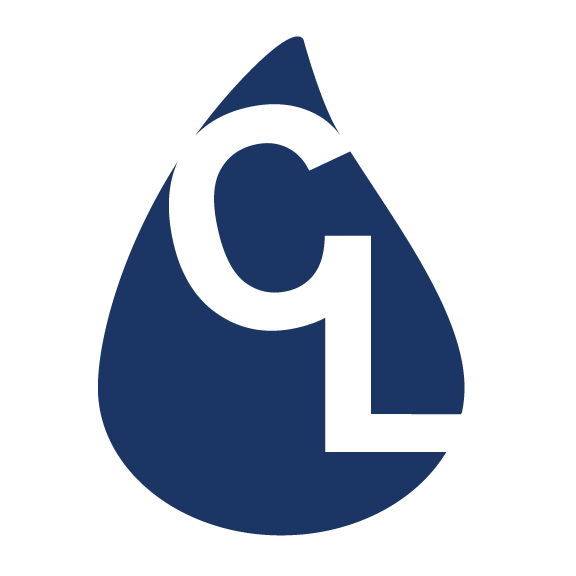We offer quick and easy weekly bacterial tests that fulfill your county’s health department requirements.
Includes:
- a 24-hr. test for the presence/absence (P/A) of total coliforms
- a 24-hr. test for the presence/absence (P/A) of E. coli
Cost: $20
The submission deadline is 5:30PM on Thursday
Reporting:
- We can call, email, or fax the results
Sample Collection and Submission Procedure:
(Download a printable version)
Overview
- Get a free kit
- Choose a water source
- Put on gloves
- Prepare the sample tap
- Sanitize the tap for two minutes
- Flush the faucet for five minutes
- Label the sample bottle
- Fill the sample bottle
- Complete a submission form
- Submit your sample
1. Get a free kit
A kit contains a sterile bottle and a glove.
Kits are available at two locations:
- Criterion Water Labs (329 E. Firmin St., Kokomo)
- The Howard County Health Department (120 E. Mulberry St., Kokomo)
The sterile bottle has a small amount of white powder inside. This is sodium thiosulfate, a chemical that will dissolve in your sample and neutralize any residual chlorine
2. Choose a water source
If you are checking your well, select a faucet as close to your well as possible (e.g. an outside faucet or a bypass tap near your pressure tank)
Acceptable Sample Taps
- Stationary faucet (one without a swivel joint)
- Petcock (a valve used to drain pipes)
Unacceptable Sample Taps
- Water fountains (test the source leading to the drinking fountain instead of the drinking fountain itself)
- Taps with leaks at the stem
- Swivel joint faucets and hoses
- Some threaded spigots
3. Put on the glove
4. Prepare the sample tap
Remove all aerators and screens and put carbon filters, sediment filters, and water softeners on bypass
5. Sanitize the tap for two minutes
Sanitize your tap by one of the following methods:
- Option A. Spray with Bleach
- Option B. Soak in Bleach
- Option C. Flame with a Torch
Option A. Spray with Bleach
- Do not let the bleach come into contact with your clothes, skin, or eyes
- Prepare a bleach solution by mixing 1 oz. of bleach per gallon of water, or mixing 1 TBS of bleach per 0.5 gallon of water
- Flush the tap with cold tap water for one minute
- Use a spray bottle for two minutes to saturate the tap opening
Option B. Soak in Bleach
- Do not to let the bleach contact your clothes, skin, or eyes
- Prepare a bleach solution by mixing 1 oz. of bleach per gallon of water, or mixing 1 TBS of bleach per 0.5 gallon of water
- Put the bleach solution in a sandwich-size plastic bag
- Immerse the tap opening in the solution for two minutes
Option C. Flame with a Torch
- This method could damage pipes if the temperature-induced stresses are too great. Proceed with caution
- This technique is recommended for all resamples and/or when aerators or screens have been removed
- Use an alcohol torch, canned heat, or butane lighter torch
- Flush the tap with cold water for one minute
- Flame the tap, directing the flame to all surfaces of the tap that are contacted by water
6. Flush the faucet for five minutes
This will flush your water line and ensure that the sample you draw will be a good representation of the quality of your water
7. Label the sample bottle
- List your name
- List the date and time you collected the sample
- List the location you are testing
8. Fill the sample bottle
- Reduce the water to a pencil-thin stream
- Fill the container above the 100-mL line
- Do not rinse the bottle out, because this would remove the sodium thiosulfate
- Do not allow the sample to overflow
- Do not touch the lip or the inside of the bottle
- Cap the bottle tightly
- If the residual chlorine in the sample is so high that it neutralizes the sodium thiosulfate in the bottle and the sample still smells of chlorine, the sample cannot be tested
9. Complete a submission form
Complete a Private Drinking Water Submission Form
10. Submit your sample
Submit your sample within six hours if it is not refrigerated or within thirty hours if it is refrigerated.
Kits are available at two locations:
- Criterion Water Labs (329 E. Firmin St., Kokomo)
- The Howard County Health Department (120 E. Mulberry St., Kokomo)
Samples may be kept on ice for transportation; this is recommended but not mandatory. Samples frozen in shipment due to inclement weather cannot be tested.
Download a printable version of these directions.
Return to Test Overview or Test Grid
DISCLAIMER: Testing results are for information only. It is the customer’s responsibility to ensure the validity of these test methods for waters of untested matrices. Meeting and/or exceeding EPA standards for particular tests conducted does not insure potability. Customers will be given the federal, state, and local standards for the tested contaminants. Customers must determine from the comparison of the resulting data with the standards the safety of the water being tested. No guarantees about the container contamination can be made by Criterion. Water is tested as received. Criterion Water will offer possible solutions to problems found, but will not be able to guarantee any such solution. For health concerns, please check with medical professionals and the local health department. Criterion reserves the right to return untested sample portions.
